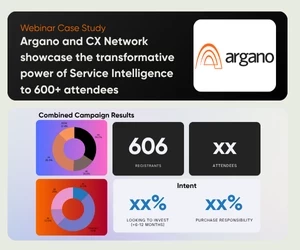Elevating customer experience through tech in Asia
Hyper-personalization strategies are working for firms throughout Asia as highlighted by the CX strategies of DHL, Alipay and Huawei
Add bookmark
Marketers throughout Asia know that personalization – whether in the way customers are addressed or the way in which their preferences are reflected – elicits smiles, increases brand loyalty and affects goodwill.
A problem can be an opportunity
One of the greatest deterrents to personalization in Asia over recent years has been the Covid-19 pandemic. Social distancing created many issues for businesses throughout the continent but also presented some with an opportunity to embrace hyper-personalization in a bid to get closer to their customers.
“Social distancing does not mean we have to distance ourselves from our customers,” said Julian Neo, managing director of DHL Express Manila and Brunei in a recent CX Network interview. Indeed, the DHL Sales Team stepped up by assisting SMEs who struggled with the limitations imposed on their operations during the heights of the pandemic. They shared market insights and became business advisors who offered alternative solutions. DHL hyper-personalized customer service better by allowing customers to book and enquire about shipments on a more personal platform WhatsApp. This simplified process not only helped keep systems running but also built greater empathy.
In addition to creative thinking, technology has also played a pivotal role in advancing hyper-personalization. In the retail space, marketing efforts have been focused on integrating empathy into selling strategies. AI and automation has given businesses more capabilities to collect data and insights on market trends.
Asia’s leading fintech companies like China’s Alipay and India’s Paytm now deliver hyper-personalized offerings based on data harvested from the usage of their respective apps. E-commerce platforms have introduced more unique and curated product line-ups to serve customers whose shopping decisions are influenced by personal discovery.
Making hyper-personalization strategies work
Technology powers hyper-personalization and makes every customer experience strategy more formidable. Through technological factors, marketers can take advantage of the following customer experience hacks:
Harvesting real-time data
Every interaction, such as the click of a button or abandoning an in-progress payment transaction, tells companies something about consumer behavior and the data collected can be used to improve CX. Today, when it comes to cultivating data, businesses throughout Asia stand to benefit, with China, Japan and the wider Asia-Pacific region home to some of the fastest-growing dataspheres in the world.
Employing artificial intelligence
Once customer data has been recorded, artificial intelligence (AI) can be used to customize responses and build better engagement with customers. A chatbot, for example, can be programmed to provide instant information and deal with general questions. Singapore telecommunications company Singtel has been using its Shirley chatbot for years and she has served as an instant point of contact for customers seeking answers to their queries.
Using predictive analytics
After an interaction with a customer, a company can further use real-time data and AI to prepare for future customer demands or needs. Huawei global accounting and reporting senior director David Wray has likened it to a virtual crystal ball – a very intelligent one at that.
“As a company, we want something more reliable than a crystal ball, however,” Wray noted. “So, predictive analytics uses data, statistics and some basic assumptions to map out patterns, connections and algorithms.”
Striking a balance with transparency
While hyper-personalization resonates well with customers, concerns about the loss of privacy remain. In various countries around the world, governments have introduced more stringent privacy laws to protect people from businesses that misuse their personal data.
Marketers need to be transparent and upfront about what data is collected and how it is used to improve customer experience. Once the customer trusts a brand to use their data with respect, hyper-personalization offers a potential win-win solution for both parties.
Technology and customer behavior drive the trajectory of hyper-personalization strategies. Even if businesses consider only these two ever-evolving factors, Asian firms can be assured of more exciting customer experience innovations in the years to come.




























